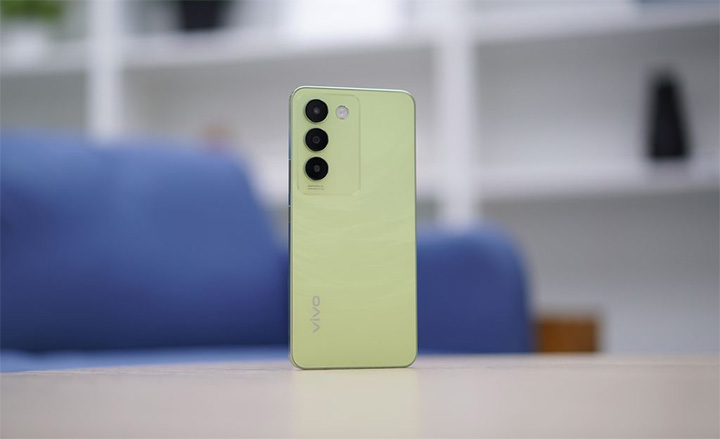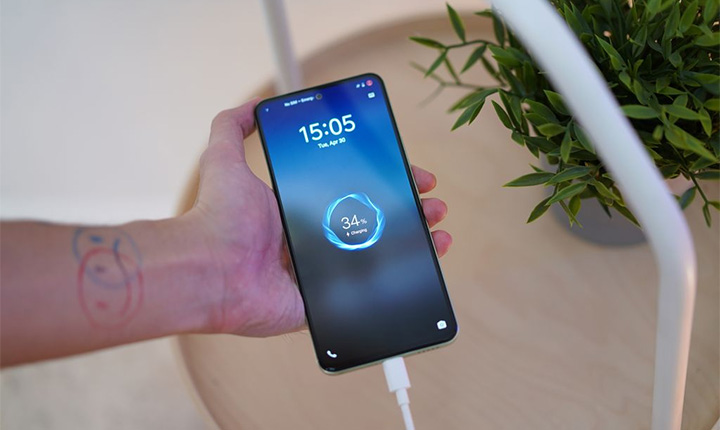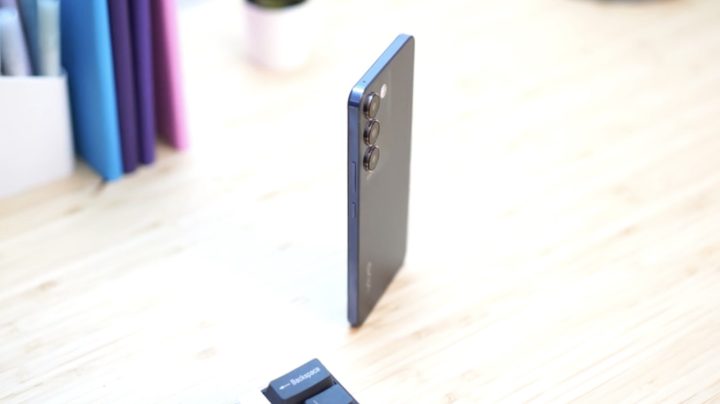The budget midrange smartphone market becomes more and more competitive each year. When it comes to phones priced under PHP 15,000USD 256INR 21,669EUR 243CNY 1,862 specifically, there are a lot of choices to choose from in 2024 alone. Most of them are well packaged too, offering decent specs and performance.

Today, we are checking out another new entry into that already competitive smartphone segment – the vivo Y100. Not only does it look great, but it is quite affordable too, starting at only PHP 12,499USD 213INR 18,056EUR 203CNY 1,551 for the 8G+128GB variant. But there are some trade-offs, especially if you compare it to its competitors.
Still, the question remains. How will the new vivo Y100 fare against the rest of the smartphones in the segment? To find out, I suggest you read on.
Table of Contents
There’s no question that the vivo Y100 looks great, especially in the Breeze Green colorway of the review unit we have. If this color is too loud for you, there is another more subtle color option available called Crystal Black.

One reason to pick the Breeze Green color is because of the color shift effect, which is not found in the black colorway. When exposed to UV light or sunlight, the color of the phone changes to a deep shade of green, which matches the swirl effects of the back panel.
Because of the matte finish of the panel, it’s relatively smudge resistant too. However, the same can’t be said about the glossy finish of the camera island. With that, you can use the phone without a case just to show off the nice back panel.

In terms of materials, we initially thought the back panel was made out of plastic, just like the frame. However, vivo does say the color-changing feature is thanks to the use of Color Changing Fluorite AG Glass. So yes, it is made out of glass. It seems relatively scratch-resistant too after using it without a case and being bunched up together with all the other stuff in my bag.
It’s not the slimmest nor the lightest smartphone in the market since it measures 163.17 × 75.81 × 7.95 mm and weighs 196g. Overall, the phone does feel sturdy and is easy to use with one hand.

On the right side, you’ll find the volume rocker and the power button, while the left side is clean. At the bottom, there’s the USB-C port, and a loudspeaker, along with the dual-sim card slot and microSD slot. At the top, there’s only a secondary microphone, while the earpiece doubles as a loudspeaker.
Yes, you do have stereo speakers on the vivo Y100. Not to mention IP54 dust and splash resistance.
One of my favorite aspects of the vivo Y100 is the display. You have a 6.67-inch AMOLED display with 2400 × 1080 resolution and a 120Hz refresh rate. The borders are relatively thin, but the top and bottom portions are a bit thicker. Still, it’s not something you would mind.

As you would expect from an AMOLED display, you get vivid colors and deep blacks, which makes for a great viewing experience. In the settings, you can even adjust the screen colors from Standard (default), Pro, which desaturates the colors, and Bright for even more vivid and saturated colors. You can also choose the screen color temperature to your liking.
With the 120Hz refresh rate, you also get smooth animation all around. This goes for whether you’re watching videos or even when you’re just browsing social media. However, it’s the gamers who will really be able to benefit from the 120Hz refresh rate, but we’ll discuss more of this later.

What surprised me though is how bright the screen can get. The vivo Y100 has a maximum brightness of 1800 nits, which is perhaps one of the brightest in its class. For reference, most phones in this price range usually have a peak brightness of around 950-1200 nits.
After using it in the recent hot summer days, I must say it is bright. I could easily see everything on the screen even while I was outside at around 1 PM. This makes it great if you plan on going out and about, need to reply to emails, or just want to relax outdoors.
As for the speakers, they’re great too since they’re Hi-Res certified. The dual stereo speakers are also very loud, and you can get them up to 300% volume when watching videos. In terms of audio output, they are quite clear and you do get a decent sound stage. However, when you bump it up to 200% or higher, the audio quality does drop in favor of loudness.
So if you’re watching with friends, you can be sure they will hear everything going on.
For cameras, the vivo Y100 features a dual rear camera highlighted by a 50MP main shooter and a 2MP depth shooter. As for the third lens, vivo says that it is a flicker sensor. At the front, you have an 8MP camera for selfies.

The image quality produced by the cameras aren’t the best. In the day or in well-lit environments, you do get decent images which are relatively sharp with decent contrast. But if you pixel peep, you’ll notice that the clarity isn’t the best. And when you use zoom, the quality also goes down.

It’s a similar experience when you’re taking photos at night or in low light. You end up losing a lot of detail, and the photo isn’t as sharp. Specifically, it looks like the camera put a smoothening filter over the image in order to reduce the grain.
Still, if you’re not too OC with photos, it is decent enough. Although I would recommend editing them in post via Lightroom Mobile or your choice of photo editing software to make the image look even better.

You can expect similar outputs in terms of video. The maximum video recording capability of the vivo Y100 is 1080P@30FPS. The videos are decent enough if you just want to record content. There’s no image stabilization either so you need to keep a steady hand when you’re shooting otherwise you get shaky videos. But like the image, these will be decent enough if you just want to create content.
To give you a better idea, you can check out the sample gallery below.
So far, the vivo Y100 has been great in terms of design, display, and audio. While the camera could be better, it is still quite useable, and not to mention decent. But one aspect that did disappoint with the Y100 is the chipset.
Under the hood of the vivo Y100 is a Snapdragon 685 4G chipset along with 8GB of RAM, and up to 256GB of internal storage. If you do need more storage space, you can expand it via a microSD card slot.

It’s not the most powerful chipset out there, and it shows. If you’re planning to use the phone mainly to do work such as replying to emails, browsing social media, and even watching videos, then you will be just fine. But the lack of performance shows especially when you are playing games on this phone.
From my experience, it can run the usual host of light games such as Mobile Legends and Asphalt 9 without any issues. However, graphic intensive titles have a much tougher time with this phone.

Specifically, the Y100 can run Genshin Impact on the low settings, but you still get the occasional framerate drops and stutters, especially when there is a lot going on. I tried setting it to max graphics and 60FPS, and well, don’t bother trying to play.
There is a Game Booster feature that squeezes out extra juice, but that didn’t seem to help with Genshin. Not to mention the phone heated up quite fast while running Genshin Impact after around 30 minutes of play time.
So, while you can play games on the vivo Y100, I would not recommend running graphic-intensive titles such as Genshin and the like. On lighter games though, you should be fine.
To give you a better idea of how the phone performs, check out the benchmark scores below.
The vivo Y100 runs on Android 14 skinned with Funtouch 14. Funtouch 14 is a nice and simple OS to use, and it even gives you several features such as a hidden taskbar on the side to quickly go through different apps.

There are also several customization options available to give users a more personal touch. Aside from changing the themes, you can even go to the settings and change the graphics and animation when you are charging the phone and more.
But perhaps the biggest and most useful features vivo added to this phone is in terms of battery life. We will discuss them more in detail later in the battery section. But for reference, you can choose whether you want fast charge all the time and even how to efficiently save battery life.
What I didn’t like about the vivo Y100 is the amount of bloatware it came with, and there are a lot. Most of the apps that came pre-installed I ended up deleting to free up some valuable space.
The battery life of the vivo Y100 is also one of the phone’s strong suits. It only packs a 5,000 mAh battery pack, but it surprisingly lasts a very long time. During my time with the phone, it the Y100 lasted me more than a day despite being used to capture content, watch videos, and play games.

Playing Genshin did seem to use much more battery life given that the phone heated up. However, once I stopped playing the phone cooled down, it was once again a power efficient smartphone.
As mentioned earlier, there are several features that users can take advantage of to extend battery life. In the battery saver mode alone, you can already tweak several features on how it does so. Once the battery goes down to 5%, users can even activate Super Battery Saving Mode to help make the phone last a little bit longer.

When you do need to recharge though, the vivo Y100 also comes with 80W wired fast charging.
In terms of connectivity, you are limited to just 4G. But aside from that, you get the usual suite of features such as dual-band Wi-Fi, Bluetooth 5.0, GPS, and NFC.
Overall, the vivo Y100 does have its strengths and weaknesses. With a starting price of PHP 12,499USD 213INR 18,056EUR 203CNY 1,551 for the 8G+128GB variant, it is an affordable smartphone for someone that places heavy value on a stylish smartphone with a beautiful display, nice audio, and a long battery life.

The only downside to the Y100 is that the performance can be a bit lacking if you want to play games. Not to mention you don’t have 5G connectivity to work with and a lackluster camera.
Considering how competitive the segment of the vivo Y100, it might have a hard time attracting some buyers given the other choices out there. But for those who don’t need the performance, then you should be fine with this phone.

But what do you think of the vivo Y100? Share your thoughts in the comments below.
What we liked:
* Very long battery life
* Nice design
* Beautiful Display
* Great Audio
What we didn’t like:
* Lackluster camera
* Only 4G connectivity
* Performance could be better
vivo Y100 4G specs:
6.67-inch AMOLED display @ 2400×1080 pixels
120Hz refresh rate, 1800 nits (max brightness)
Qualcomm Snapdragon 685 4G
4x Cortex-A73 @ 2.8GHz + 4x Cortex-A53 @ 1.9GHz
Adreno 610 GPU
8GB LPDDR4X RAM
128GB, 256GB UFS 2.2 internal storage
Up to 1TB via microSD card
50MP main camera
2MP depth sensor
8MP front camera
1080p @ 30fps video recording
4G, LTE
WiFi 5
Bluetooth 5.2
GPS, GLONASS, Beidou, Galileo, QZSS, NAVIC
USB-C
IP54 Rating
FunTouch 14 based on Android 14
5,000mAh Li-Ion battery, 80W fast charging
163.17 × 75.81 × 7.95 mm (dimensions)
196 grams (weight)

YugaTech.com is the largest and longest-running technology site in the Philippines. Originally established in October 2002, the site was transformed into a full-fledged technology platform in 2005.
How to transfer, withdraw money from PayPal to GCash
Prices of Starlink satellite in the Philippines
Install Google GBox to Huawei smartphones
Pag-IBIG MP2 online application
How to check PhilHealth contributions online
How to find your SIM card serial number
Globe, PLDT, Converge, Sky: Unli fiber internet plans compared
10 biggest games in the Google Play Store
LTO periodic medical exam for 10-year licenses
Netflix codes to unlock hidden TV shows, movies
Apple, Asus, Cherry Mobile, Huawei, LG, Nokia, Oppo, Samsung, Sony, Vivo, Xiaomi, Lenovo, Infinix Mobile, Pocophone, Honor, iPhone, OnePlus, Tecno, Realme, HTC, Gionee, Kata, IQ00, Redmi, Razer, CloudFone, Motorola, Panasonic, TCL, Wiko
Best Android smartphones between PHP 20,000 - 25,000
Smartphones under PHP 10,000 in the Philippines
Smartphones under PHP 12K Philippines
Best smartphones for kids under PHP 7,000
Smartphones under PHP 15,000 in the Philippines
Best Android smartphones between PHP 15,000 - 20,000
Smartphones under PHP 20,000 in the Philippines
Most affordable 5G phones in the Philippines under PHP 20K
5G smartphones in the Philippines under PHP 16K
Smartphone pricelist Philippines 2024
Smartphone pricelist Philippines 2023
Smartphone pricelist Philippines 2022
Smartphone pricelist Philippines 2021
Smartphone pricelist Philippines 2020
Alvin says:
who will not need performance in smartphone worth 12k? even 5k smartphone will beat this crap. Please recommend to DO NOT BUY this phone! even low end spec smartphone will beat this phone.